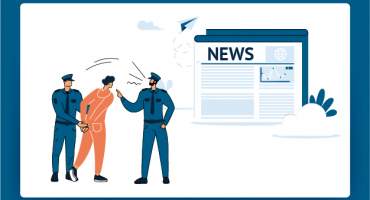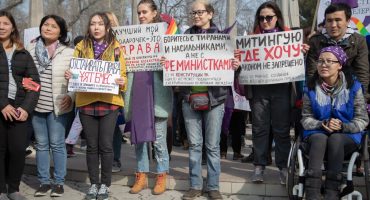Rallies, pickets and protests help people to demonstrate their dissatisfaction with the authorities’ actions. In developed countries, it is one of the most effective instruments of democracy, but in most Central Asian countries, the residents are only learning to use mass protests to project their attitude to certain issues.
Often, such protests end with clashes with the security forces, when ordinary citizens and journalists – witnesses and participants of manifestations of street democracy – suffer.
CABAR.asia Media School and Azamat Tynaev, media expert from Kyrgyzstan, a country with high protest potential, prepared recommendations on how media employees can protect themselves while covering protests.
In fact, there are no simple rules for covering mass protests. Each case is unique. This is called an extreme journalism precisely because a reporter never knows what to prepare for.
This means that before going to cover protests or Special Forces’ operations, you need to assess the situation. The life puts new obstacles each time, but there are signs that give hints on what to do. Editors should know the basic nuances of fieldwork and be able to use them to assess the degree of a danger for a journalist.
An editor only can decide to send a journalist to cover such events, if a journalist is not a freelancer.
Moreover, it is only an editor who is responsible for potential risks and threats.
It is important to send an experienced and stress-resistant journalist to cover the protest, and in the best scenario, they should not be sent alone. During such events, it is better to work in pairs to assist each other if something happens.
In addition, you should remember that problems of nationalism could be aggravated during the protests. The editor must consider this when sending an employee to the scene.
The gender of the journalist working at the epicentre of the protests should not even be discussed. Aggression from the protesters can appear regardless of the gender of the journalist.
It does not matter if a woman or man works to cover the protests, but it is necessary for her/him to be dressed appropriately for the situation.
Usually, no one cares about such little nuances, but sometimes, journalists are covering the protests wearing high heels. This is inappropriate, since in extreme circumstances you need to be able to leave the scene quickly. How fast and far can you run in uncomfortable shoes?
Journalists need distinctive signs during the protest. Practice demonstrated that vests with the word “Press” on them alone are not enough. Stickers, armbands or caps can be used as additional passive protection.
However, do not forget that a journalist’s uniform can cause aggression from the crowd or other threats. Especially, if the actions of groups of people are covered, which are illegal or are paid for by someone.
Bicycle helmets or even construction helmets are a good way to prevent head injury. Especially, when people from the crowd start throwing stones.
However, journalists do not always appreciate the benefits of helmets. There was a case when a media employee said that he would no longer wear a bicycle helmet, since it cracked when he fell. What can we say? The journalist drew the wrong conclusions from the situation: if he did not have this helmet on, his head would have cracked.
When covering mass protests, any military style ammunition is strictly prohibited. The journalist should be dressed in civilian clothes.
Do not attract attention by using journalistic equipment. This is important to keep in mind when it comes to an aggressive crowd. You need to be careful, as the expensive equipment can provoke a robbery attempt.
You can stream directly from your smartphone. Moreover, this method is used not only by journalists, but also by ordinary citizens.
We are just beginning to understand and study the ethics of live broadcast. This tool is not new for journalists, but it is not fully understood either. It often happens that the reporter turns on the camera and does not care what it films.
You have to be fully involved in the process and understand what is happening on camera.
Another problem is the journalists’ content published on social networks. Considering emotions and stress, people are able to write inappropriate posts, which can generate unhealthy interest to the media.
It is important to instruct journalists to be as impartial and objective as possible, not to allow any provocative or toxic statements in their posts and prohibit the use of hate speech.
We observed cases when the content about provocative events can lead to a lawsuit against the journalists. That is, when the situation stabilizes, the problem is long forgotten, but a lawsuit is filed against the media.
Therefore, it is important for a journalist to protect her/himself not only physically, but also to make sure that the materials and statements do not entail problems in the future.
Any kind of a report is not worth a journalist’s life. We cannot leave the events, but we must keep a safe distance.
Our profession implies an ambiguity in this regard: we say that it is important to protect ourselves, but, on the other hand, this professional risk remains a part of our work.
Main photo: RFE/RL
If you have found a spelling error, please, notify us by selecting that text and pressing Ctrl+Enter.





